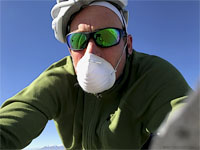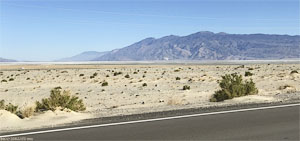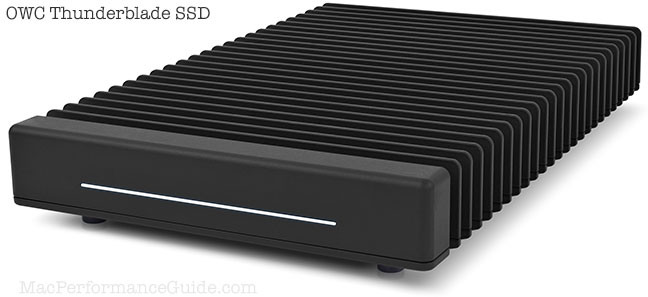Southern Inyo Double Century
Related: double century, Eastern Sierra, electrolytes, exercise, gear, hard core, Lightweight, Mt Whitney area, Owens Lake, Rides, Southern Inyo Double Century, ultra endurance exercise
Southern Inyo Double Century starts from Lone Pine, CA and is officially 199 miles with 8,100’ of climbing.
This was my first double for 2015 and 2016. Its a good choice to kick off the season, and is followed a week later by Joshua Tree Double Century and two weeks later by Solvang Spring Double Century.
2017 experience
Nearly a month later, on April 1 2017.
I completed the Camino Real Double Century in on Feb 18, then the Solvang Spring Double on March 18. The Southern Inyo Double Century on April 1 was thus my 3rd this year.
The Southern Inyo Double Century normally runs in early March, but in 2017 it was rescheduled to April 1st to avoid excessively windy conditions. But ironically we (or at least I, wind varied by time of day) had the worst wind ever!
Across the southern leg along the dry Owens Lake bed, I was sandblasted and pelted by gravel like hail. I could just control my bike, barely, weighting my front wheel (Lightweight VR8). Had I ridden the Lightweight Autobahn VR with twice the surface area, I would have been blown off the road! Prior to the southern leg of Owens Lake, a big brown dust cloud polluted the air south of Owens Lake to the turn-around point (ferocious headwind heading north, high-speed initially going south).
Fortunately, I had seen the conditions from high above at Cerro Gordo the day before, and I am thankful to the caretaker for finding a dust mask that I made use of for 50 miles or so, not wanting to inhale the sand and dust. Together with my sunglasses, some of my face was protected from gravel and sand. I could tell that the mask was working in two ways: first, every time I pulled it off in order to drink or eat, I could smell the dust. Second, I had no lung spasms or coughing the whole day, even when done. IMO, the event organizers should offer and provide dust masks for this particular event—dust is always an issue it seems.
I found that the metal nose clip on the mask I am wearing in the picture below was critical for good sealing as shown below. Those silly stretch-over-face masks I see people wearing cannot possibly seal off that nose area when stretched over like that.
See also P100 / N100 Particulate Respirator Works for Smoke.
Continues below...

Obviously a respirator mask like this @AMAZON is not going to be too attractive or comfortable, but a mask like the 3M Particulate Respirator @AMAZON would work reasonably well. If a mask is going to be worn, a cool flow valve and N100 rating makes sense to me—I’m going to try the 3M Particulate Respirator 8233 N100 @AMAZON to see if it is compatible with cycling. See also the 3M web site.
The AMSTON N95 @AMAZON with charcoal filtration looks good also, claiming to seal down to 0.3 microns. It’s annoying that many masks do not specify to what particle size they filter.
Note that allergies and/or dust can irritate sinuses and lungs and can predispose to infection by things like influenza or tuberculosis. Hence a mask worn for allergies could reduce the chance of the flu.
Asthma and cycling: I wore a mask for 50 miles that sealed off my face during the Southern Inyo Double Century last March, for dust off Owens Lake. Just pulling it down, I could immediately smell the dust, so obviously it has some beneficial effect. All the other riders were inhaling fine dust with nasty metals and things like arsenic into their lungs. The year prior it was less windy and I did not wear a mask that year and my lungs were irritated with a mild cough when done—small airway impairment.

Performance
It took me 52 minutes longer (riding time) and I burned 700 calories less in 2017 vs 2016—seems about right given my poor power output.
As for physical, I started at 6 AM sharp, and I believe I was one of the fastest riders (top several I think and only 1 or 2 left after me)—since I think I passed almost everyone and they all started earlier. But from my personal point of view my performance was awful: I began to feel nauseated around mile 140, and that persisted the rest of the ride, making it unpleasant to eat or drink.
I don’t know what really was responsible but at mile 160 or so I really felt puky awful and stopped for a few minutes. The top woman rider stopped and took pity on me, giving me half a bottle of her special drink. It helped and I resumed riding, slowly. About 4 miles later SAG gave me a bottle of water and I ate a GU and took some Endurolytes and felt better for the remainder. Still, I began to feel nauseated by the finish again (I had not eaten or drank again for 20 miles).
After finishing, I sat in my car for 10 minutes, trying to let the nausea pass. That sort of helped, so I loaded my car and drove to find a campsite. Dinner was one scoop of Hammer whey and a dried persimmon—all I could gag down. At 3 AM I awoke and scarfed some water and sardines, and went back to bed until 6:30 AM or so then got up. I wasn’t hungry at all, but I was OK to eat again!
Cause?
I always have a little nausea on this double, but this year was really awful.
In retrospect, I ate only 1400 calories the entire ride with a very modest breakfast and so my theory is that what I experienced was mainly a beginner’s mistake: a bonk (maybe). How that explains the nausea I am unsure, so maybe it was a combination of feeding and hydration and electrolytes. At any rate, it’s clear that I screwed up big time on feeding.
This year has been a lousy year —my power (watts) are way down, my endurance if anything is just fine, but in total it is terribly frustrating.
It might be related to seasonal allergies—clear nose/sinuses and small airways all clear after a day or two in the mountains. But within 24 hours of returning home, small airway impairment ratchets up and sinus blockage begins. Time to see the allergist again—ObamaDontCare forced me to waste thousands of dollars having to switch 3 times now, restarting shots over and over and I finally abandoned out of frustration (and cost)—but looks like it was a bad idea. So start over again on the shots, which do work.
Diet (grains) may also be a factor. I stopped eating all grains for a long time and re-tried, but I seem to bloat up and it takes 10 days to normalize. Makes food choices much more limited... and I like Panda licorice for my doubles, which are wheat-based. Gah!
My whole training season has been pretty screwed and it is rare that I am able to do a hard workout—most days I drag my sorry ass home at very low power. It’s like having a low-grade flu that never ends. The double centuries I have been able to do at lower power levels and by resting 2 or 3 days prior to the event (no riding). It’s intimidating to think about Devil Mountain Double because my weight is 10 lbs over last year and it is a brutal climbing course. I might not do it.
2016 experience
Measured mileage differs from 2015 most likely due to wheel calibration; the course was the same as 2015 and I did do the full course. Official mileage is 199 miles with 8100' elevation gain.
Temperatures were ideal—really not possible to be better: 50° in early morning running to about 75° at the hottest, with 68° or so the average.
As in 2015 I had a flat issue, picking up a small puncture in the front tire that quickly deflated to 20 PSI but held there back to the car a few miles off, but depriving me of the fun of the best descent of the circuit (had to keep speed way down due to mushy front tire). I swapped front wheels at the car and continued. After the event, Stan’s No Tubes completely sealed the pinholes and I used this same wheel/tire (Veloflex Vlaanderen with ~6000 miles on it!) for Joshua Tree Double as well. That’s 4 doubles plus 9 months or riding on that tire!
Wind heading south on the east side of Owens Lake was just brutal. Turning right onto the southern leg around Owens Lake (heading W/SW), it then switched directions, remaining just about as brutal, for a total of 40 or so miles (!) of energy-sapping headwind. On the plus side, the final leg back had a tailwind most of the way, albeit less vigorous.
Given the wind, 2015 and 2016 times are not really comparable, but I felt a lot better in 2016 (not barfy and nauseous at the finish as in 2015). Nor did I have foot pain other than minor stuff, using Giro Prolights again which worked well.
Kilocalories: 7380 (within 10 KCal of 2015)!
Graph shows roll time, not clock time (excludes rest stops).

2015 experience
The far reach on the ride was to the border of Death Valley National Park. Here I had to wait briefly for a required sign-in, but I also had to take a 'dump' really badly and no restrooms, so I then had to stop again for relief about 5 minutes later. Somehow this shut me down and broke my mojo; up until then I had been feeling terrific. After that I felt marginal, and later, downright crappy. :;
Later at the high point of the course (mile ~133) I ate a sugar cookie, thus breaking the “never eat untested food” rule. I paid for it dearly with a terrible gut ache for miles 150-200 or so (after the descent).
Something went very wrong in general with fueling and hydration; I lost all appetite and sense of thirst at about mile 140, or rather I had no desire to eat or drink anything of any kind. Even Hammer gel I could scarcely gag down. It was literally having to force myself to eat and drink, but the gut ache made it a very unattractive proposition. The power decline is obvious by mile 150 but actually started earlier around mile 100 (just after the 'dump'). Physiologically I had goofed somehow: clear and excessive urine (overhydration) for the first 6 hours of the event was a constant nuisance. I did take Endurolytes so it wasn’t lack of electrolytes.
Together with painful big toes (new shoes and orthotics, 3 weeks with them prior), the last 50 miles were physically very unpleasant. I had to grin and bear it the best I could and I had to stop and just stand for 5 minutes at about mile 180, which helped. I felt like I wanted to throw up once I finished and it took about 90 minutes before I could eat. But after that, everything went back to normal.
At mile ~120, my rear tire flatted with two ~1/3mm diameter X 20mm long stainless steel wires embedded in the rear tire, just after I had missed a turn and ridden too far the wrong way. Once I got back on course, the good luck was the location—about 1/4 mile from my car (the route crosses back on itself). So I rode back to my car and swapped the rear wheel. Later, Stan’s No Tubes completely sealed the pinholes and I used this same wheel/tire for the next two double centuries as well. Stan’s NoTubes is great for such pinholes, and the tires can still take full pressure with no chance of blowing out the sealant (larger holes get you home with Stan’s, but tend to blow out the sealant sooner or later, re-flatting).
Kilocalories: 7390
Graph shows roll time, not clock time (excludes rest stops).





